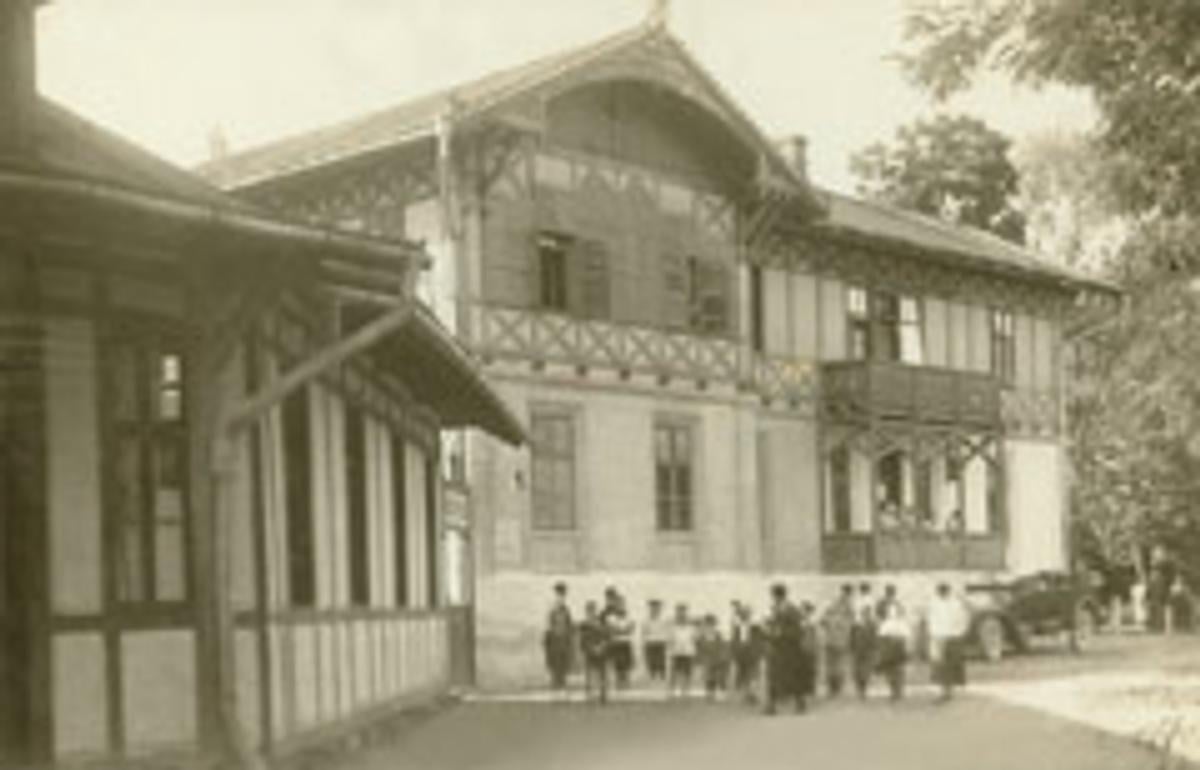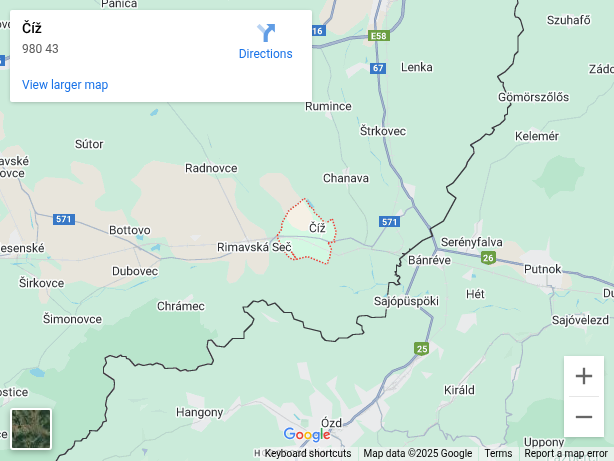This postcard from the 1920s shows the Číž spa, in south-central Slovakia, known for its iodine water.
The first reference to the town in historical documents is from 1245. However, in three successive centuries the town was almost obliterated, twice burned by invading Turks. In 1711, only two families remained after the plague decimated the population.
This special spring water was discovered by chance in 1862; a local was digging a well on his own land and came across salty water at eight metres below the surface. The spring was named Themis, goddess of law and order, and before long a company with plans to construct a spa was established.
Later, two other springs of healing water were discovered. The spring with the most concentrated mineral content was named Hygiea and the third spring was called Neptun. The spa built around these springs flourished until the First World War. It was especially popular amongst Hungarians, as Číž lies close to the Hungarian border.
In the winter, the water was used to make a variety of products, for example soap for acne and skin disorders. It was even bottled and sent to the USA. Due to the rarity of iodine and bromine of high concentrations in water, it won awards at various world exhibitions.
After the war, the spa lost its Hungarian clientele and went into decline. The new Czechoslovak bourgeoisie did not find it so attractive, due to its remote location. After the Second World War, the spa was nationalised and found itself on the brink of extinction, but was restored in 1956.
The spa was privatised in 1996, and since then has undergone significant reconstruction, as well as the construction of a new water park. Nowadays, patients suffering from illnesses of musculature, joints and the back go here for therapy, as well as those with ailing thyroids.
This article was first published by The Slovak Spectator on April 14, 2008. It has been updated to be relevant today.


 Číž, southern Slovakia (source: Courtesy of Branislav Chovan)
Číž, southern Slovakia (source: Courtesy of Branislav Chovan)
